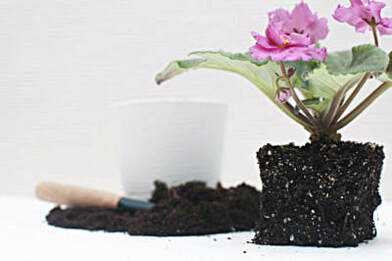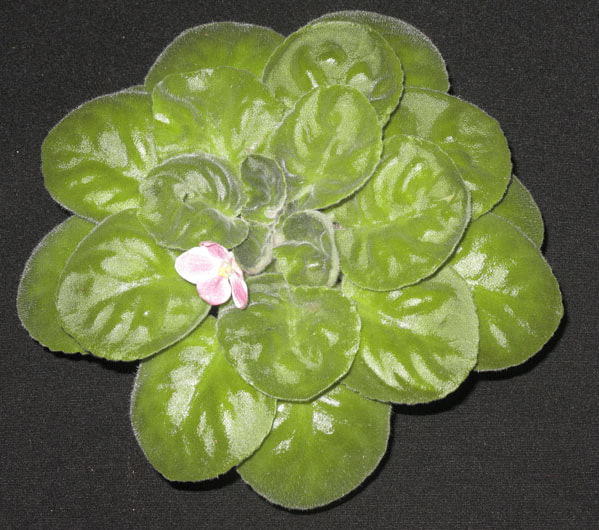
Yellow Leaves - Why is it so? – Ruth Coulson (Ruth is with the Australian African Violet Association and lives on the Central North Coast of NSW) (Originally published on the African Violets Down Under Facebook page.(www.facebook.com/groups/241227626277942/?fref=nf) Sometimes our plants do not have the lovely rich green leaves that we expect. Where the chlorophyll disappears from the leaves to some extent the leaves may become yellow, but in the case of the very dark leaves that have a red back, they will probably have a more brownish cast. If this is a problem you face, here are a few suggestions for the cause. Variegation – A simple thing to think about is whether the particular violet has variegated foliage. If you grew it over summer and it was beautifully green you may be surprised by yellow (or cream, white, pink, tan etc.) in the winter. Variegation is often hidden by heat and emphasised by lower temperatures Old leaves – Another simple explanation is that the outside leaves of the plant decline as they age. If these are the leaves that are affected it may just be natural attrition, and those leaves should be removed. Don’t ignore other possibilities, though. Light level – If the plant gets too little light the foliage will often become a pale colour. It will also stop flowering. If the light level is too high the leaves may become bleached, but they will usually be abnormally small and maybe cupped down. If receiving too much direct sunlight they may also show brown patches from sun-scald. Nutrition – If the plant has not been fertilised enough, or if the fertiliser is not sufficiently balanced, the foliage will not be beautifully green. Do not be misled into thinking it will be better to feed your African violet with unusual products or fertilisers that do not have a proper amount of nitrogen, phosphorus and potassium, as well as the other smaller elements. Lack of nitrogen will affect older leaves particularly. Of course the other nutrients are also necessary, so use a balanced fertiliser formulated for African violets in particular or for flowering plants in general. The pH of the potting mix may be too high or too low so some of the nutrients may be “locked-up”, which is to say they are not available to the plant. The only way to be sure if you suspect this cause is to test the mix, or find someone who can test it for you. A pH slightly below neutral is generally reckoned most suitable – say 6.5 to 6.8. Root damage causing older leaves to lose their vitality, even if they are not wilting. This damage can be caused by over-watering and thus damaging the roots with rot, or by infestation of soil mealy bugs. Physical root damage is also possible, of course. Slip the plant out of the pot for a visual inspection if this is a possibility. |
